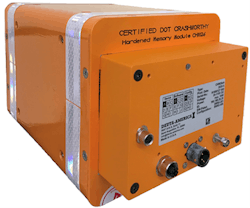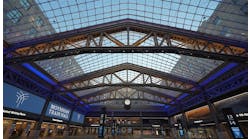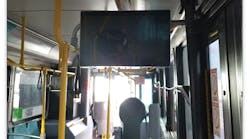Video Security: Crash Hardened Memory
Recent NTSB recommendations, the FRA NPRM 2019-14407 and APTA recommendation APTA RT-OP-RP-024-19 pertain to retaining forward-facing and operator-facing camera feeds in crash protected memory for rail vehicles. The desire to preserve such data in protected memory is not new and has been included on the NTSB Most Wanted List for years. In August 2021, the Federal Transit Authority (FTA) released FTA Report 0200 “Inward- and Outward-Facing Audio and Video Recordings for Transit Rail Vehicles” in response to an NTSB safety recommendation from 2017, which resulted from investigations surrounding transit rail collisions.
Having video data preserved after an accident can be helpful in investigating the causes and circumstances surrounding such incidents. Crash protected memory helps to ensure those videos may still be available even after a catastrophic collision. Recorders also help operators establish effective safety management strategies and training. As such, this requirement should increasingly be seen in new rail transit vehicle procurements and retrofit specifications; however, many recent procurements for new rail vehicles and retrofits have not included this requirement even though they have been required in at least some modes since 2015.
Historical providers of such protected memory devices have usually been event recorder manufacturers, not video system integrators. Saving video files rather than event data requires a significant difference in protected memory capacity, communication interface file management and read/write speed compared to traditional travel data/event storage. This is especially challenging in large memory units designed to comply to IEEE:1482.1:2013 and FRA 49 CFR 229 standards which require substantial thermal insulation and mechanical stability. These high-capacity and high-speed memories also need to be able to function reliably for years without generating an interior buildup of heat which could damage the electronics or shorten their lifecycle.
Other critical considerations are ease of integration into the network and NVR ecosystem. For example, communications interface and data latency need to be contemplated. Video must be processed and stored as instantaneously as possible. The amount of time between the loss of video feed and a power cut, for example, can have a significant impact on the usability of the stored video in post-accident investigation and should be kept under one second.
The supply industry also offers solutions which do not require a complete video system upgrade and can be retrofitted on existing NVRs to provide crash protected capabilities. As most U.S. transit vehicles are already outfitted with forward-facing and operator-facing cameras, this can impact authorities’ abilities to deploy systems cost-effectively and enable more widespread usage.
Again, available storage size is important in several ways. As more camera feeds and higher quality video are made available, memory technologies continue evolving. Acquiring the largest capacity of memory available helps to decrease the risk of obsolescence and capacity limitations threatening overall product life cycle costs. As the amount of time covered by stored video is a function of the number of cameras, video quality, compression and available storage, a large capacity memory contributes to assuring video data can be retained in high quality and from multiple cameras for longer periods of time.
The widespread use of crash hardened memory for video storage should ultimately lead to safety improvements across the industry as investigators will have access to sound and video information in addition to the traditional travel data that previously may have been unavailable because it was destroyed or never captured. This can enable not just an enhanced ability to make conclusions regarding post-accident investigations but also allow operators to improve their safety training and safety management strategies based on observed behaviors in actual operating situations.
--------------------
Blake Kozol is CEO of Deuta America Corp.

Blake Kozol | CEO, DEUTA AMERICA Corp.
Blake Kozol is CEO of DEUTA AMERICA, Corp., an international supplier of electronic systems installed inside freight and passenger cars.




